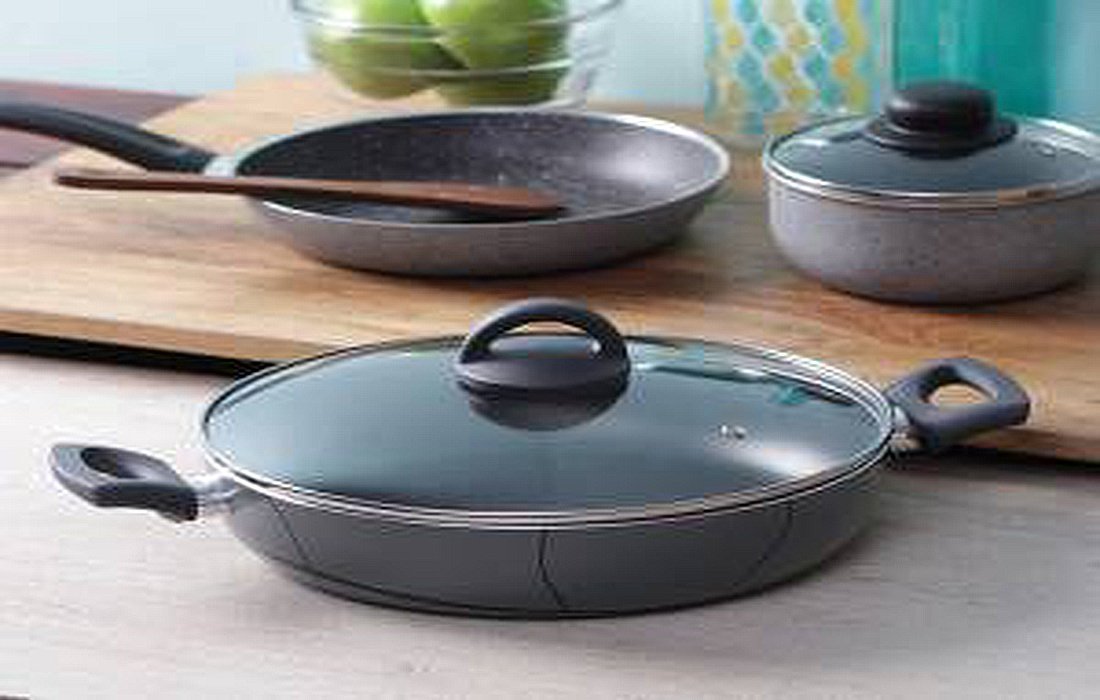Complete GuideBuying Non-Stick Cookware
Non-stick cookware comes in various styles and colors used for cooking food. Like all cookware, it has its pros and cons. Non-stick pots are lightweight, easy to clean, and require less oil, which makes them very popular. If you’re planning to buy non-stick cookware, consider the tips provided in this section on lifestyle andhousekeeping SelMagzwhich we’ve compiled for you.
Pay attention to the following tips when buying non-stick cookware:
Consider the appearance of the cookware.
This cookware is available in many designs and colors to suit your taste. However, don’t only focus on the beauty; you also need to consider other important aspects when purchasing non-stick cookware.
Buy cookware that has a standard certification mark.
When purchasing non-stick cookware, look for a standard certification mark. Some cheap non-stick pots do not have this mark. Avoid these pots and ensure the health of your family by using certified cookware. Never cook with non-standard cookware under any circumstances. Cookware made in factories with health ministry licenses is certified.
Your cookware should have a health permit.
Purchase pots that have a health permit, as those with this certification tend to be of good quality.
Non-stick pots should have no cracks or chips.
Check for any cracks or chips on the interior surface when buying non-stick cookware because using damaged pots is harmful. When cooking,food ingredientscan enter these cracks, and the materials from the cookware can contaminate your food.
Non-stick cookware shouldn’t have scratches.
Do not use harsh sponges or steel wool to wash non-stick cookware; instead, always clean them with a soft sponge or a piece of curtain fabric. Use dish soap for washing non-stick cookware and avoid laundry detergent completely for this purpose.
Disadvantages of Non-Stick Pots
Non-stick pots are relatively lightweight, easy to clean, and require less oil. However, heavy metals like cadmium can be found in non-stick pots, and frequent use may cause this metal to leach into food, increasing the risk of cancer and other diseases.
Whenever possible, avoid cooking food for children in non-stick cookware. Cooking liquid foods likesoupand boiling milk doesn’t require the non-stick feature.
Pay attention to these tips when using non-stick cookware:
When using non-stick cookware to cook, do not place food on flames above 260 degrees Celsius because overheating can cause the coating to break down, releasing toxic and irritating fumes that can cause flu-like symptoms in people.
When using non-stick cookware for cooking, use appropriate utensils like wooden or plastic spoons with no sharp edges to prevent scratches and damage.
Use a soft sponge to wash non-stick cookware to avoid scratching. Do not use harsh sponges or steel wool to prevent damage to the internal coating.
Never use damaged non-stick cookware that has scratches from washing or utensil use.
After purchasing non-stick cookware, first wash it with dish soap andwarm waterand then coat the inside surface with oil and let it sit for a few hours before using it for cooking.
Restoring Non-Stick Cookware
Some stores offer to take old non-stick cookware for repairs and restoration. However, it is advised not to do this for cost-saving; the materials used for restoring non-stick surfaces are not approved by health authorities and can be harmful to your family’s health.







